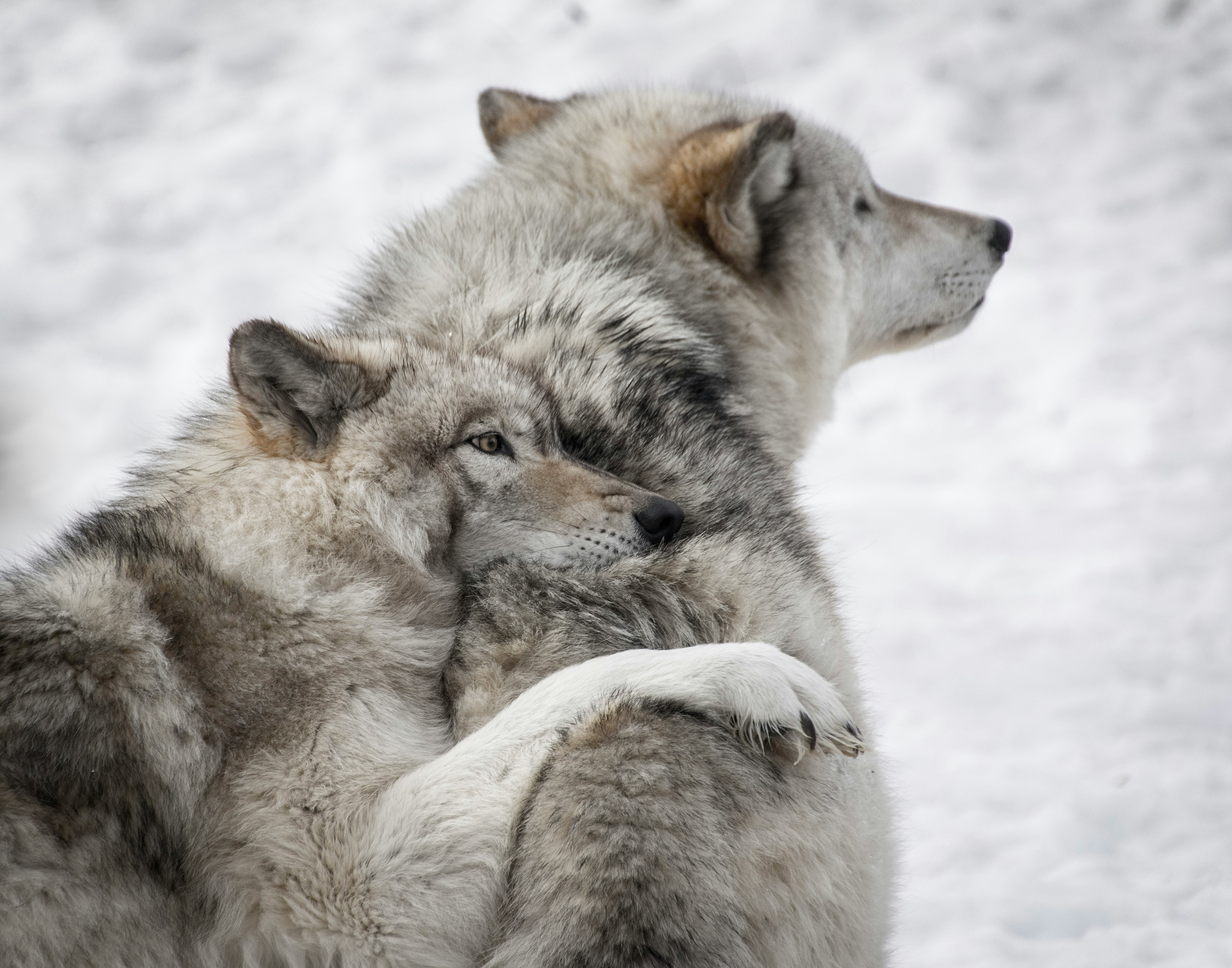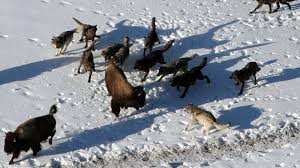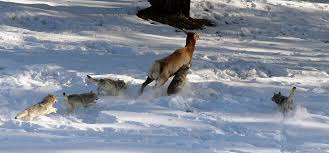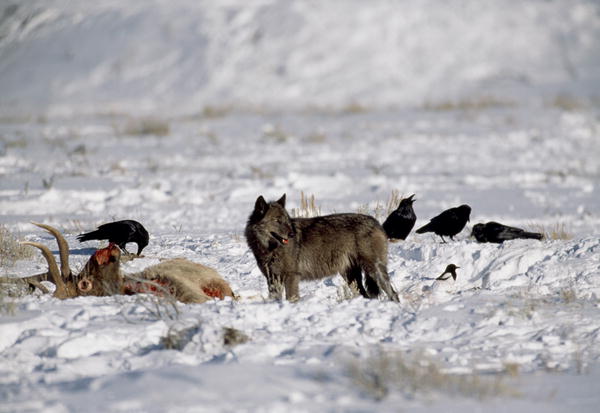
HOW THEY HUNT
wolves work together to take down prey much larger than an individual wolf; prey that may otherwise elude them. While individual wolves have been able to subdue large prey animals, their advantage is in collaborating with their pack.

Wolves are opportunists. They test their prey, sensing any weakness or vulnerability through visual cues and even through hearing and scent. They chase their prey, often over longer distances, sometimes even a few miles, to find the right animal or opportunity. On the hunt, wolves work together with certain individuals typically carrying out their specific role in the hunt, often based on age, gender and social standing.
While wolves will eat hares and other small prey, their preferred targets are ungulates, large, hoofed animals such as deer and elk. It is not uncommon for wolves to be injured or even killed during the hunt by being kicked by a hoof or gored by an antler.

Some of the wolf's bad reputation stems from the apparent mob scene that ensues when the prey begins to falter. Wolves are not equipped to dispatch their victims quickly; prey usually die of shock, muscle damage or blood loss. If it can, one of the stronger wolves will seize the prey by the nose and hold on tight, helping to bring about a more expeditious end, but the animal can still take many minutes before it succumbs.
